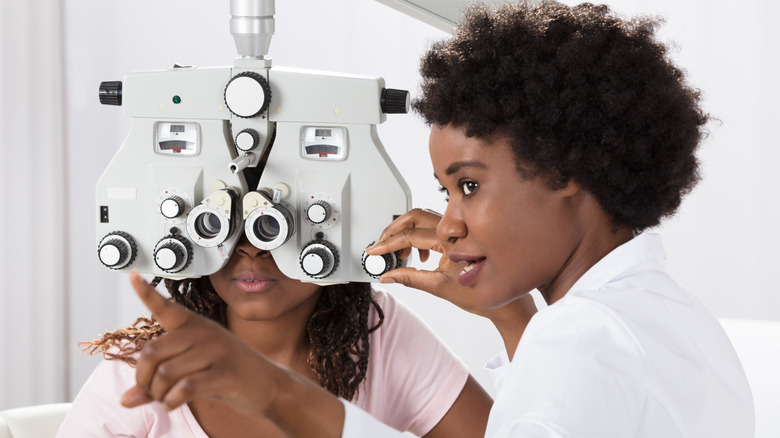What Really Causes You To Have Crossed Eyes?
Sometimes referred to as "crossed eyes," strabismus is a condition characterized by misalignment of the eyes, according to Penn Medicine. The condition affects between 3% and 5% of people and may result in eyes that point inwards, outwards, upwards, downwards, or that alternate directions. Unable to focus on one unified image, some people may experience double vision, particularly if the condition progresses into adulthood. In cases where only one eye is turned, the American Optometric Association explains that these individuals may experience some degree of vision loss in the affected eye if left untreated.
While strabismus can affect anyone of any age, it's most often observed in children by the time they turn 3 years old. Those with a family medical history of strabismus, or those with certain health conditions, including Down Syndrome and cerebral palsy, may be more susceptible to the condition. While certain risk factors may make one more prone to developing crossed eyes, let's explore the potential underlying cause of the condition.
Alternate health conditions associated with strabismus
Experts at Stanford Medicine state that reasons for the development of childhood strabismus are not well understood. Sometimes it occurs in association with alternate vision conditions, such as cataracts or farsightedness, which can place additional strain on the eye when focusing, explains the American Optometric Association. Specifically for adults, damage to the eyes or blood vessels, vision loss, Graves' disease, brain or eye tumors, as well as nerve or muscle disorders can also lead to strabismus (via Stanford Medicine).
Ophthalmologist Dr. Andrew T. Melson tells the Dean McGee Eye Institute that brain injuries may also play a role in one's risk for strabismus. "One large group of patients are those who sustain a neurological injury that damages the cranial nerves responsible for eye movements," Dr. Melson states. "Some of the other common causes include thyroid eye disease, age-related changes to your eyes' ability to converge on a near target, or decompensating ability to control long-standing eye misalignment."
For those with strabismus, eye misalignment can be corrected through surgical means, explains Dr. Melson via the Dean McGee Eye Institute. The procedure involves either strengthening or weakening the muscles alongside the eye which are creating the turn. Recovery time is often short, as patients are usually able to resume their day-to-day lives in the days following surgery.


